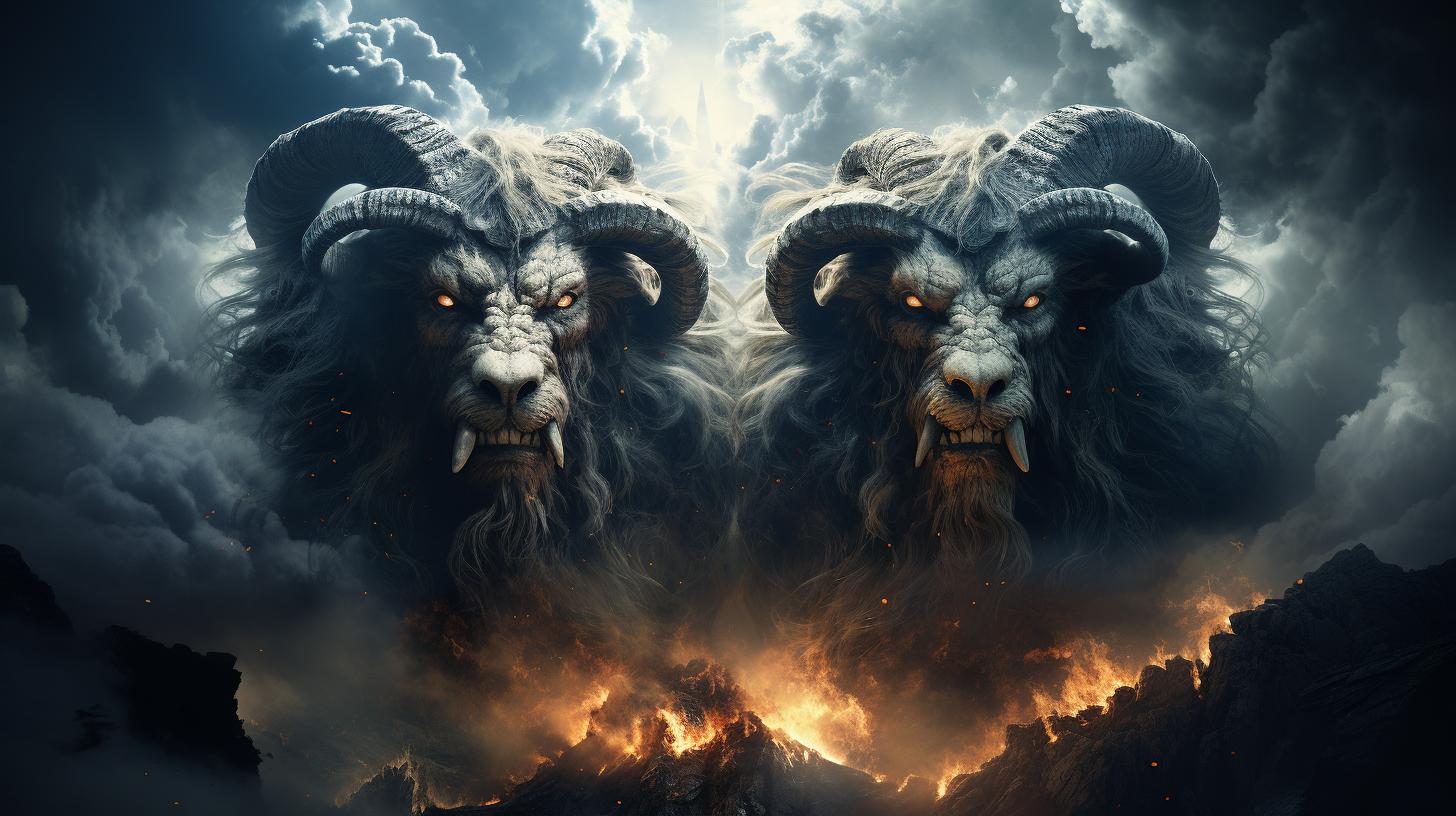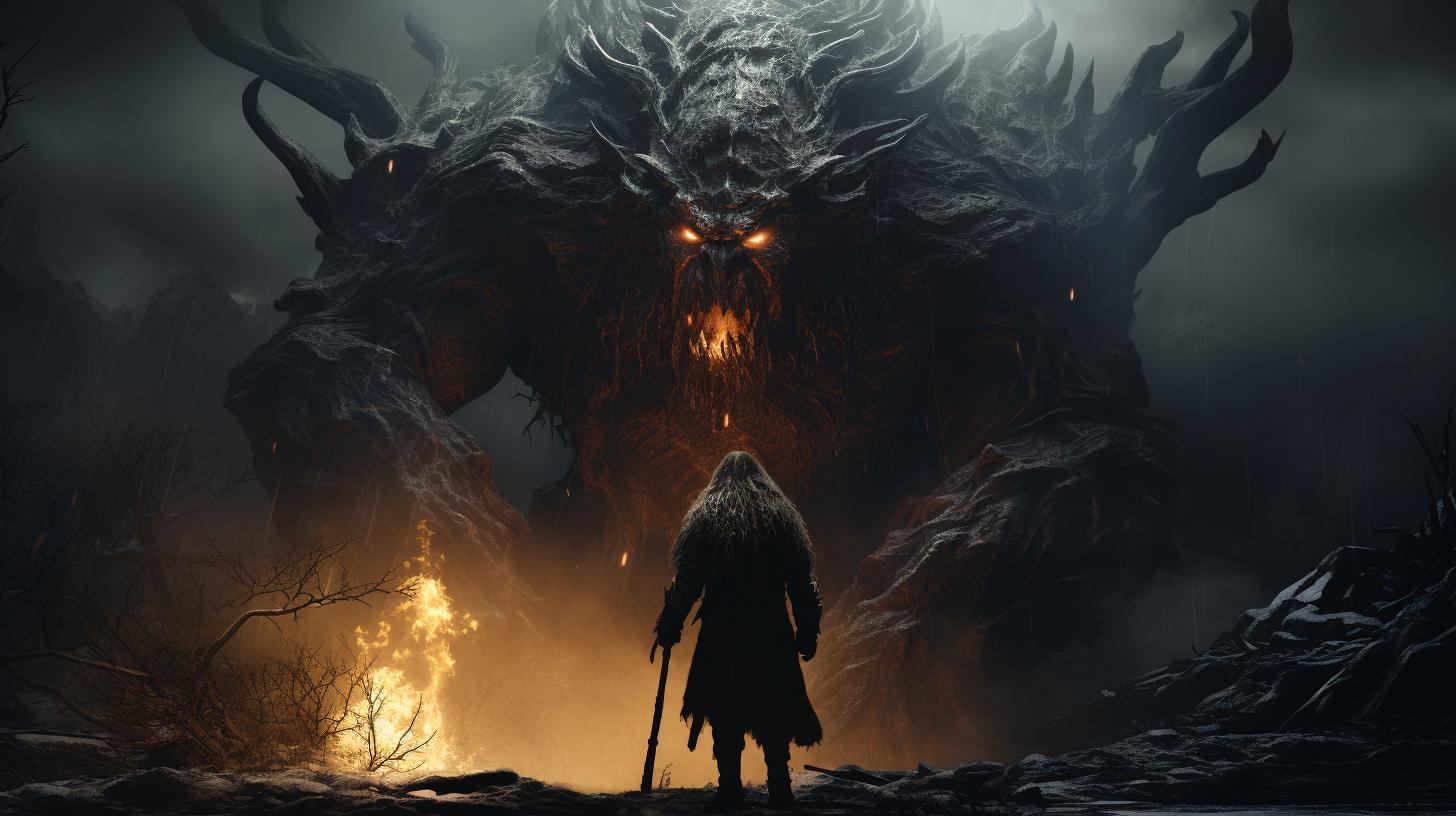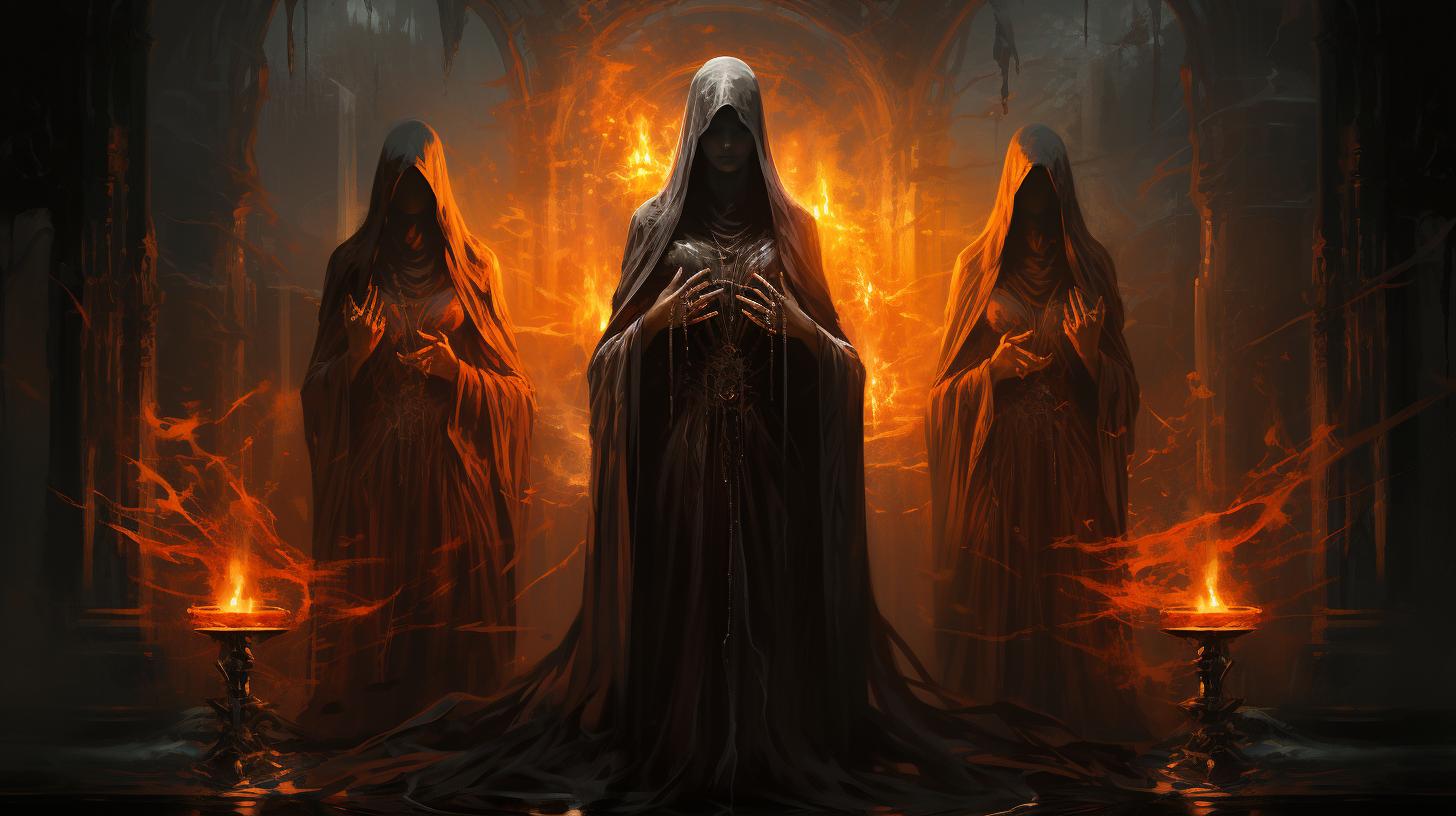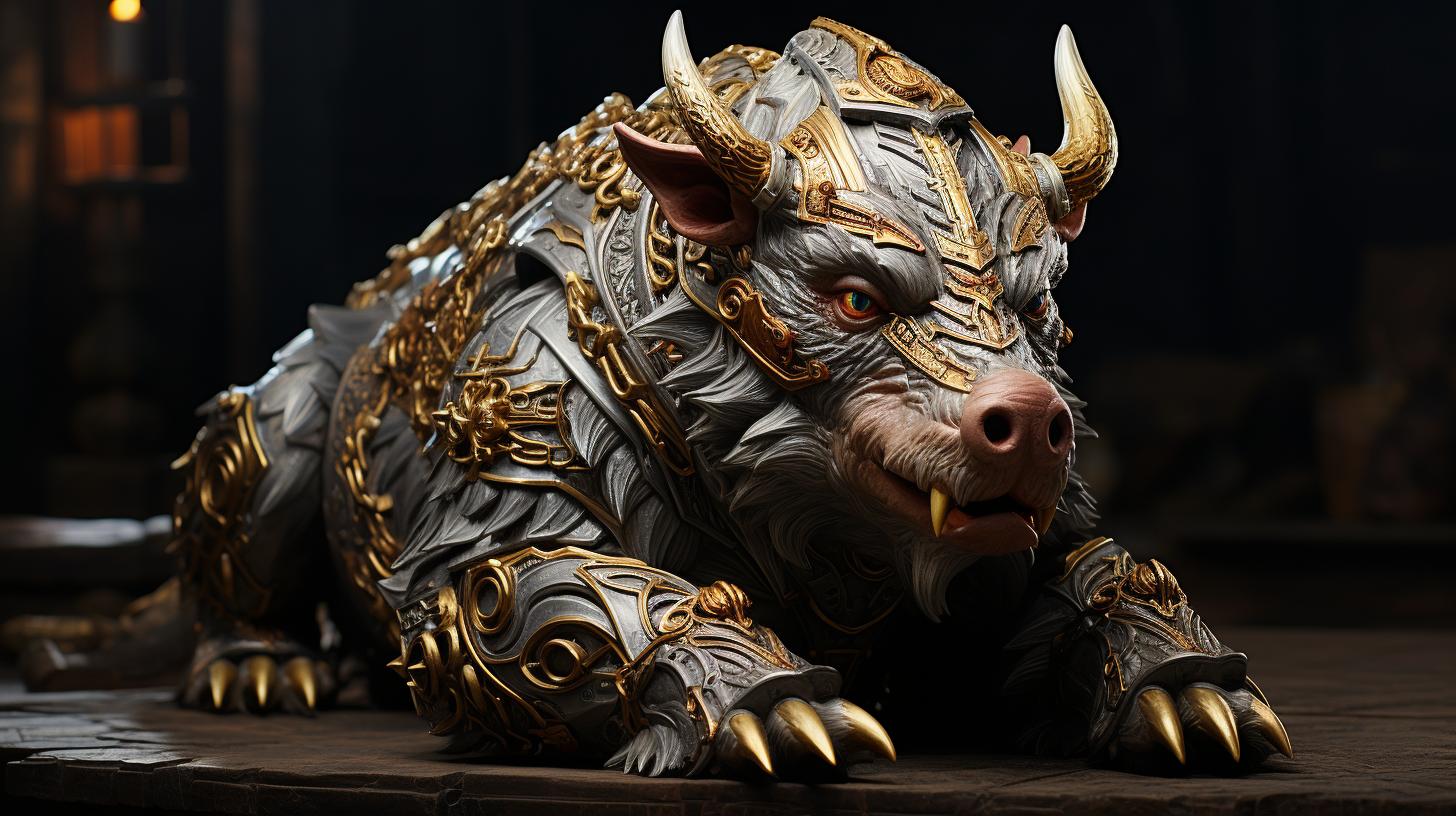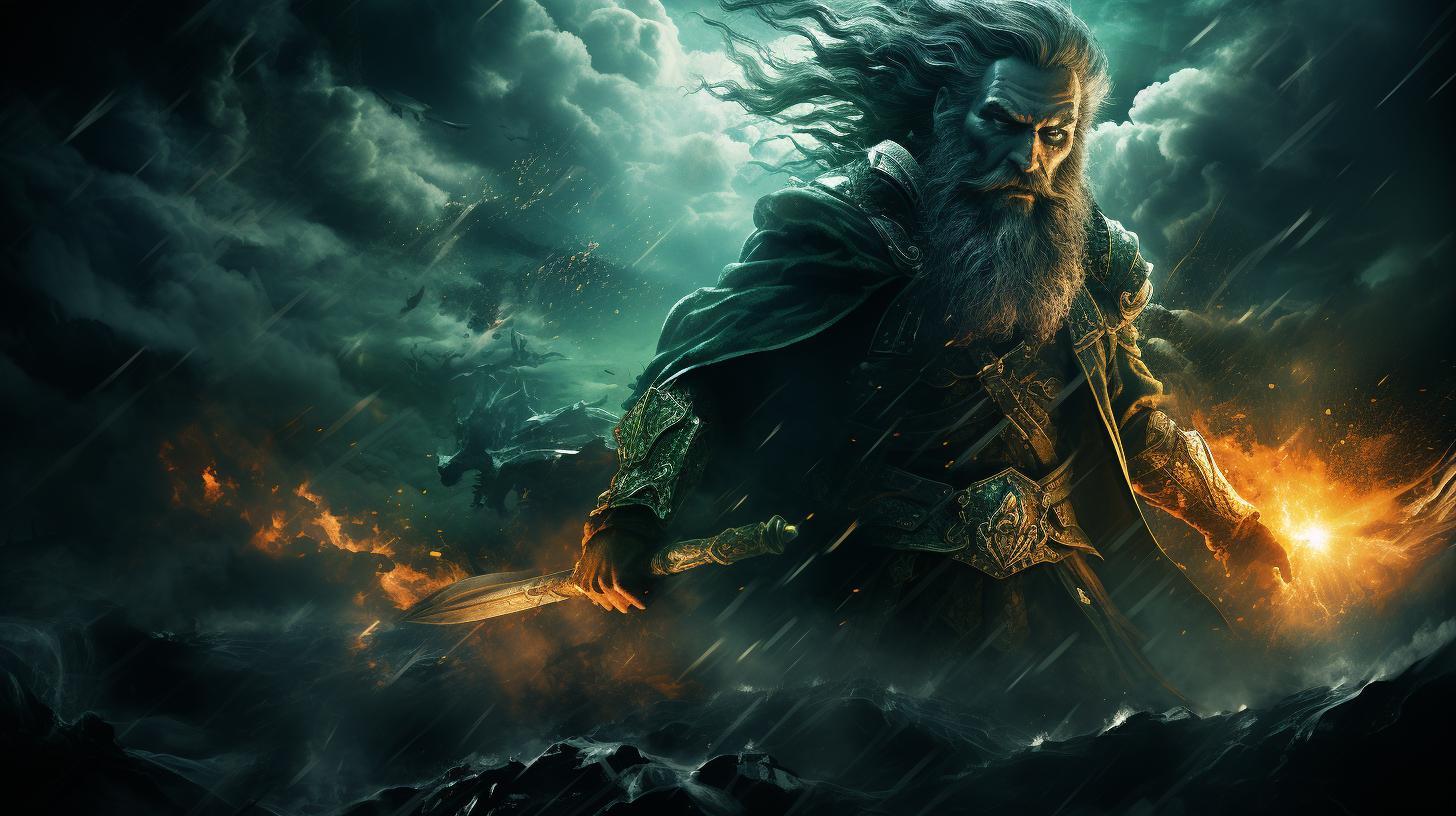Norse Mythology Sigurd: The Legendary Hero and Dragon Slayer
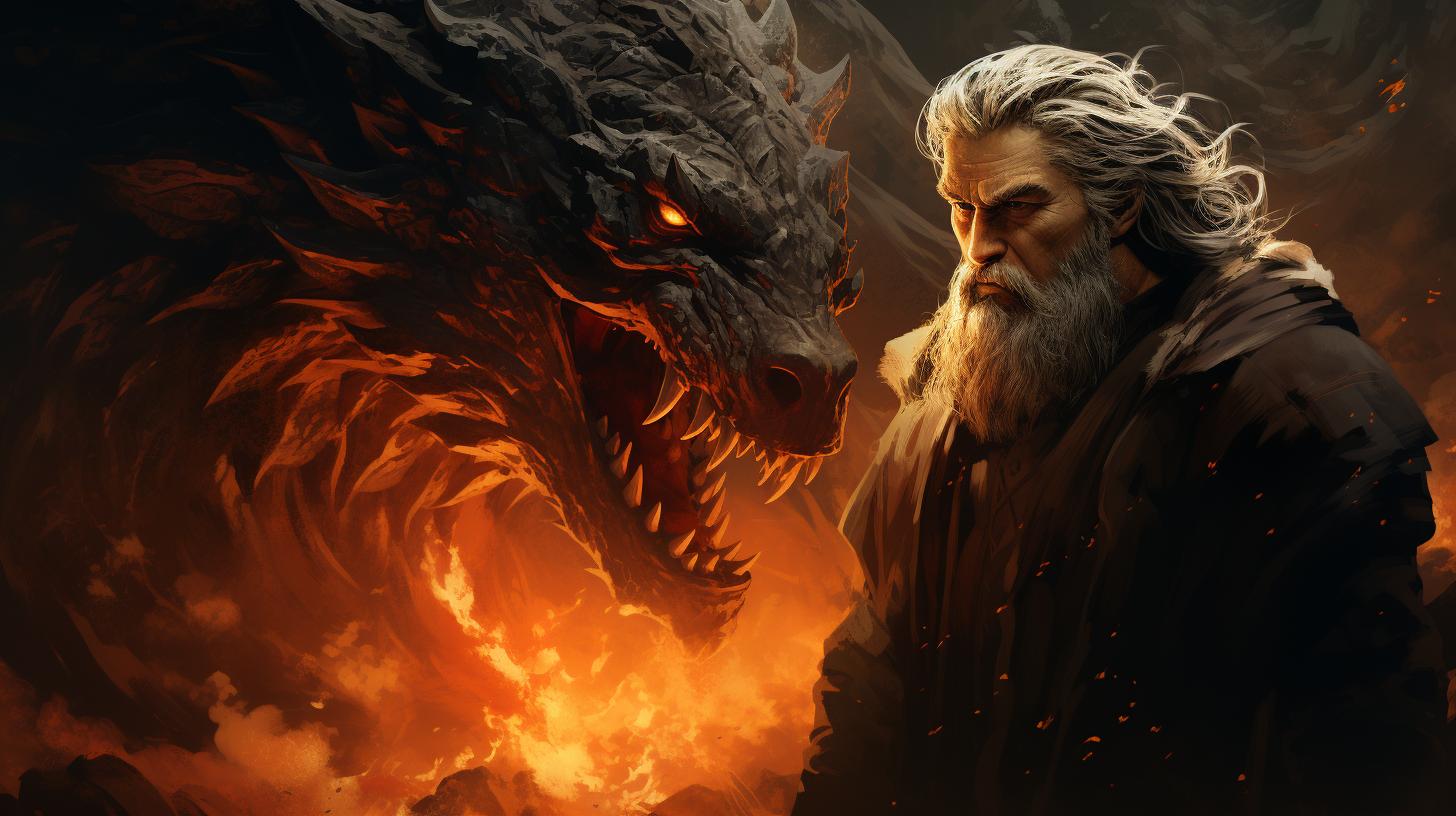
The Sigurd of Norse mythology is a legendary hero known for his epic adventures and valor. He is famous for slaying the fearsome dragon Fafnir and acquiring the coveted Nibelung treasure.
The story of Sigurd can be found in various Norse and Germanic sagas, including the Völsunga Saga and the Nibelungenlied. This mythical figure has also left a significant impact on art, literature, and even opera, with Richard Wagner’s operas depicting his heroic exploits.
The origins and variations of the Sigurd myth continue to captivate scholars, sparking debates about the historical and mythical aspects of this legendary character.
The Legend of Sigurd in Norse Mythology
The legend of Sigurd, a prominent figure in Norse mythology, encompasses tales of heroic exploits, dragon slaying, and epic quests.
Sigurd emerges as a legendary hero, celebrated for his exceptional prowess and courage in the face of adversity.
Sigurd: A Mythological Hero
Sigurd embodies the archetype of a mythological hero in Norse lore. Renowned for his valor and noble lineage as the son of the wise King Sigmund, Sigurd embarks on a remarkable journey filled with trials and tribulations.
He symbolizes the epitome of heroism, exemplifying virtues such as strength, bravery, and integrity.
The Dragonslayer: Sigurd vs Fafnir
One of the most iconic episodes in Sigurd’s legend is his fearless encounter with the fearsome dragon, Fafnir. Armed with the mighty sword Gram, forged by the legendary smith Regin, Sigurd engages in a battle of epic proportions.
With his indomitable spirit and strategic cunning, Sigurd triumphs over the monstrous creature, establishing his reputation as a dragonslayer.
The Nibelung Treasure and Sigurd’s Quest
The acquisition of the Nibelung treasure forms an integral part of Sigurd’s journey. This legendary hoard, guarded by two feuding brothers, becomes the focal point of Sigurd’s quest. He navigates treacherous obstacles and displays unwavering determination to claim the coveted riches.
Sigurd’s quest for the Nibelung treasure showcases his relentless pursuit of glory and his willingness to confront any challenge in his path.
In summary, the legend of Sigurd in Norse mythology depicts him as a mythological hero, renowned for his heroic exploits, legendary dragonslaying, and relentless pursuit of the Nibelung treasure.
Sigurd’s tales embody the timeless themes of heroism, adventure, and triumph in the face of adversity.
The Epic Sagas: Völsunga Saga and the Nibelungenlied
The epic sagas of Völsunga Saga and the Nibelungenlied present captivating renditions of Sigurd’s legendary exploits. These sagas, originating from Norse and Germanic traditions, offer two distinctive perspectives on the hero’s glorious adventures.
Völsunga Saga: The Norse Version
Völsunga Saga, an ancient Norse saga, recounts the heroic tale of Sigurd with rich detail. It traces his lineage, from his father Sigmund, a venerable king, to his upbringing under the care of Regin, son of Hreidmar.
The saga delves into Sigurd’s quest to retrieve the precious Nibelung treasure, his slaying of the fearsome dragon Fafnir, and his discovery of newfound powers from consuming the dragon’s blood.
It also explores Sigurd’s encounters with Brynhild, highlighting the themes of love, betrayal, and the tragic consequences that ensue.
Nibelungenlied: The German Adaptation
The Nibelungenlied, a German adaptation of Sigurd’s saga, offers a distinct rendition of his heroic endeavors. Here, Sigurd is known as Siegfried, and his journey intertwines with the Burgundian court. The narrative revolves around the conflict between his wife, Kriemhild, and Brunhild, another woman he marries under false pretenses.
The saga vividly portrays Siegfried’s slaying of the dragon and subsequent possession of the mighty Nibelung treasure, along with the political disputes and tragic events that transpire as a result.
Parallels and Differences in the Sagas
- The Norse Völsunga Saga provides a more comprehensive account of Sigurd’s lineage and his divine ancestry as a descendant of Odin. The saga places significant emphasis on Sigurd’s interactions with various gods and supernatural beings.
- On the other hand, the German Nibelungenlied focuses more on the political and social dynamics within the Burgundian court, highlighting the conflicts between characters and illustrating the tragic consequences of their actions.
Despite these variations, both sagas depict Sigurd/Siegfried as a valiant hero, placing him in extraordinary circumstances, battling fearsome foes, and confronting the challenges of love, betrayal, and destiny.
Sigurd in Art and Literature
Exploring the artistic and literary portrayals of Sigurd provides a captivating glimpse into the enduring fascination with this legendary hero. From Richard Wagner’s operas to German and Scandinavian literary works, Sigurd’s heroic feats have captured the imagination of artists and authors throughout history.
Let’s dive into the various facets of Sigurd’s presence in art and literature:
Richard Wagner’s Operas: Siegfried and Götterdämmerung
Richard Wagner, the renowned German composer, immortalized Sigurd’s story in his operatic masterpieces. The operas “Siegfried” and “Götterdämmerung” vividly portray the epic adventures and tragic fate of the Norse hero. Wagner’s compositions brought Sigurd’s valiant spirit and mythical universe to life on the opera stage, solidifying his place as a central figure in the realm of music and performance.
Sigurd in German and Scandinavian Literary Works
Beyond Wagner’s operas, Sigurd’s legend has also found its way into the pages of German and Scandinavian literature. Works such as the Völsunga Saga, the Poetic Edda, and various medieval Germanic texts explore different aspects of Sigurd’s story.
These literary renditions delve into his heroic journey, his encounters with legendary figures, and the triumphs and tragedies that shape his destiny.
Sigurd’s Cultural Influence and Nationalistic Associations
The influence of Sigurd extends beyond artistic expressions. His character and myth have been embraced by Germanic cultures, forging connections between nationalism, heritage, and identity. During the 19th and 20th centuries, Sigurd, particularly through Wagner’s operas, became intertwined with German nationalism, with interpretations utilizing his tale to evoke a sense of Germanic pride and ideals.
In summary, Sigurd’s presence in art and literature has cemented his status as an iconic figure in Norse and Germanic mythology. Wagner’s operas brought his legend to the stage, while literary works expanded upon the various facets of his heroic journey.
Additionally, Sigurd’s myth has been linked to cultural identity and nationalistic sentiments, further highlighting his enduring impact on Germanic traditions.
- Sigurd’s portrayal in Richard Wagner’s operas immortalizes his myth through music and performance.
- German and Scandinavian literary works like the Völsunga Saga and the Poetic Edda offer diverse perspectives on Sigurd’s heroic exploits.
- Sigurd’s myth has been associated with German nationalism, emphasizing its cultural and heritage significance.
Exploring the Origins and Variations of the Sigurd Myth
As we delve into the captivating world of Norse mythology and the legendary hero Sigurd, we are presented with a rich tapestry of ancestral heritage and intriguing variations within the saga.
Let’s explore the origins and key aspects that shape the fascinating story of Sigurd.
Sigurd’s Ancestry and Family Background
In understanding Sigurd’s origins, we trace his lineage back to his father, Sigmund, a wise and esteemed king. The tale unfolds as Sigmund pursues a beautiful princess, choosing him as her husband.
However, this union sparks the ire of King Lyngvi, leading to a siege on Sigmund and his lands. Though Sigmund meets his demise, his pregnant wife, Hjordis, finds refuge with King Alf.
Regin and the Forging of the Sword Gram
Under the patronage of King Alf, Sigurd is raised by Regin, the son of Hreidmar, at the royal court. It is Regin who suggests the audacious quest for the treasure guarded by the dragon Fafnir, who was once a man and Regin’s brother.
Seeking a suitable sword, Sigurd eventually wields the legendary Gram, a weapon with a storied past passed down through the Volsungs.
Sigurd’s Encounter with Brynhild
As Sigurd embarks on his heroic journey, he becomes entangled in the tale of two powerful women. One of them is the valiant Brynhild, with whom Sigurd falls deeply in love.
Their destinies intertwine, but their union faces challenges and conflicts that will leave lasting consequences on the course of the saga.
Interpretations and Controversies Surrounding the Saga
Throughout literary history, the Sigurd myth has stirred interpretations and controversies among scholars. Discussions continue to this day regarding the mythical or historical nature of Sigurd and Brynhild’s story, adding a layer of intrigue to the mythology.
Experts delve into the saga’s symbolism, archetypes, and overarching themes, shedding light on the profound impact and enduring fascination it holds for enthusiasts of Norse mythology.
Symbols and Themes in the Sigurd Mythology
The Sigurd mythology is rich with symbolism and recurring themes that shape the narrative and add depth to the legendary hero’s story.
From the iconic heroic journey and quest for glory to the profound symbolism of dragons and treasure, the Sigurd myth delves into themes of love, betrayal, tragic consequences, and the interplay of fate, destiny, and divine intervention.
The Heroic Journey and Quest for Glory
At the heart of the Sigurd myth lies the classic hero’s journey archetype. Sigurd embarks on a perilous quest, facing immense challenges and defeating formidable foes. His relentless pursuit of glory and honor drives him to overcome obstacles, transform, and ultimately achieve greatness.
This theme resonates with audiences, inspiring them to embrace their own inner hero and embark on their personal journeys of self-discovery and triumph.
The Symbolism of Dragons and Treasure
The dragon serves as a powerful symbol in the Sigurd myth, representing untamed chaos, greed, and the forces of evil that must be overcome. Sigurd’s slaying of the dragon Fafnir illustrates the triumph of good over evil and the conquering of one’s fears.
The treasure guarded by the dragon represents not only material wealth but also the transformative power it holds, tempting and corrupting those who seek it. The symbolism of dragons and treasure resonates with the human desire for power, wealth, and personal growth.
Love, Betrayal, and Tragic Consequences
Within the Sigurd myth, love becomes a catalyst for both triumph and tragedy. The complex relationships between Sigurd, Gudrun/Kriemhild, and Brunhild highlight the power of love, but also its potential for betrayal and devastating consequences.
The intertwined fate of these characters weaves a tragic tapestry of love lost, broken alliances, and devastating conflicts, exploring the depths of human emotions and the consequences of actions driven by love and desire.
Fate, Destiny, and Divine Intervention in Sigurd’s Story
The Sigurd myth delves into the concept of fate and the inevitability of destiny. Sigurd’s journey is often guided by divine intervention, with gods and goddesses shaping his path and influencing the outcomes of his actions.
The interplay between mortal agency and divine forces adds a layer of transcendence to the story, raising philosophical questions about the nature of free will, predestination, and the intricate relationship between humans and the divine.
Sigurd as a Cultural Icon in Norse and Germanic Traditions
Sigurd, the legendary hero of Norse mythology, has transcended ancient sagas to become a revered cultural icon in both Norse and Germanic traditions. His epic adventures and heroic feats have captured the imagination of people throughout history and continue to influence modern pop culture, reinforcing his status as a legendary figure.
Let’s explore Sigurd’s relevance in modern pop culture, his role in Nordic identity and heritage, his significance in Germanic literature and folklore, and the enduring legacy he has left behind.
Sigurd’s Relevance in Modern Pop Culture
The legendary exploits of Sigurd have found their place in modern pop culture, where his story has been retold and adapted in various mediums.
From literature to film and television, Sigurd’s daring heroism and quest for glory have captivated audiences worldwide. His battles against formidable foes like the dragon Fafnir and his pursuit of treasure resonate with contemporary audiences, who continue to be enthralled by his adventures.
Sigurd’s Role in Nordic Identity and Heritage
Within Nordic communities, Sigurd holds a special place in shaping their collective identity and heritage. As a cultural icon, he symbolizes the bravery, courage, and perseverance that are deeply ingrained in Norse traditions.
Sigurd represents the values of heroism, honor, and exploration, which are cherished and celebrated as an integral part of the Nordic culture and identity.
Sigurd’s Significance in Germanic Literature and Folklore
In Germanic literature and folklore, Sigurd’s legend has played a significant role in shaping the literary traditions and oral storytelling customs of the region.
His exploits have inspired numerous works of literature, poetry, and songs throughout history. From the medieval epic Nibelungenlied to contemporary retellings, Sigurd’s enduring presence in Germanic folklore continues to fascinate and enchant audiences.
The Enduring Legacy of the Sigurd Myth
The legacy of Sigurd extends far beyond the pages of ancient sagas. His influence can be seen in various aspects of modern society, from art and literature to music and even advertising.
Sigurd’s character continues to inspire and captivate artists, writers, and creators who seek to capture the essence of his timeless heroism and adventurous spirit. As long as people yearn for tales of bravery, love, and adventure, Sigurd’s legend will remain an indelible part of human culture.
Exploring Sigurd’s World: Norse Mythology and its Deities
In this section, we delve into the captivating realm of Norse mythology and the prominent deities that inhabit it. Norse mythology is rich with divine beings who play significant roles in Sigurd’s story and the wider mythological tapestry.
Let’s explore some of the key figures:
Odin: The Allfather and Wisdom Seeker
Odin, often referred to as the Allfather, holds a central position in Norse mythology. He is the chief god and ruler of Asgard, home of the gods. Odin is renowned for his insatiable hunger for knowledge and wisdom, acquiring it through sacrifices and his quest for the runes.
He is associated with warfare, poetry, and wisdom.
Loki: The Trickster and Shapeshifter
Loki is a complex and enigmatic deity, known for his mischievous nature and shape-shifting abilities. Often portrayed as a trickster, Loki can be both a friend and a foe to the gods and the mortal realm.
His actions often lead to chaos and unforeseen consequences, making him a compelling character in Norse mythology.
Thor: The God of Thunder and Protection
Thor, the mighty thunder god, wields the powerful hammer Mjölnir and is known for his incredible strength and bravery. He is the protector of both gods and humans, defending them against threats and wielding his thunderous might to combat evil forces, including giants and other formidable creatures.
Freyja: The Goddess of Love and Beauty
Freyja is a beloved goddess associated with love, beauty, and fertility. As the ruler of the heavenly realm known as Fólkvangr, she is also considered the goddess of war and death, choosing half of the slain warriors to join her in her realm.
Freyja possesses a magical necklace called Brísingamen, which symbolizes her beauty and power.
Through these powerful deities and their intricate relationships, Norse mythology weaves a captivating tapestry that shapes the world of Sigurd and adds depth to his heroic journey.
The Enigmatic Sigurd: Myth or Historical Figure?
A central question surrounding the legendary figure of Sigurd is whether he was a mythical creation or a historical figure. This debate stems from the limited historical evidence available and the mixture of historical and mythical elements in his story.
Historical Context and Interpretations
To assess the historical context of Sigurd, scholars examine the existing historical records, archaeological findings, and cultural influences of the time. Interpreting these sources, several theories have emerged, attempting to place Sigurd within a historical framework.
Interpretations of the Sigurd Myth in Scholarship
Within the realm of scholarship, experts have proposed multiple interpretations of the Sigurd myth. Some view the stories as purely symbolic or allegorical, representing broader themes of heroism and human experience.
Others consider Sigurd as an amalgamation of historical figures and legendary embellishments.
Unraveling the Mystery: Separating Fact from Fiction
Separating fact from fiction in the Sigurd myth is a challenging endeavor. The lack of concrete historical evidence leaves room for various interpretations and speculation. Scholars carefully analyze the available sources, comparing them with other contemporary accounts and cultural motifs.
Sigurd’s Continued Relevance and Influence in Modern Times
Regardless of the debate surrounding Sigurd’s historicity, his cultural impact and importance persist to this day. The myth of Sigurd has captured the imagination of countless artists, authors, and enthusiasts over the centuries, resonating with audiences and contributing to the enduring appeal of Norse mythology.
Conclusion
The question of whether Sigurd was a myth or a historical figure continues to elicit debate and interpretation. While the elusive nature of historical evidence might never provide a definitive answer, the enduring fascination with Sigurd underscores the power and enduring relevance of mythology in shaping cultural narratives.
.












